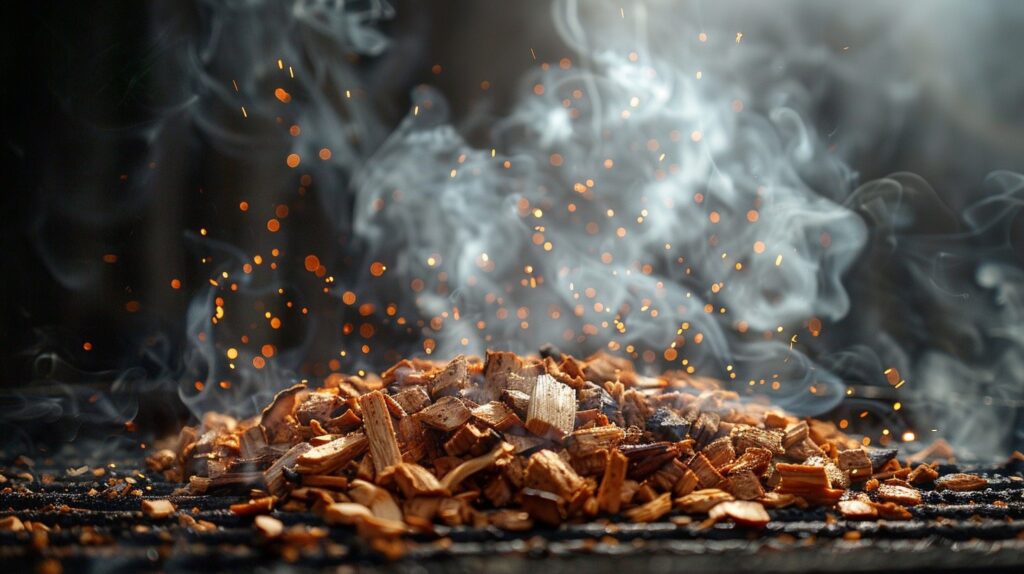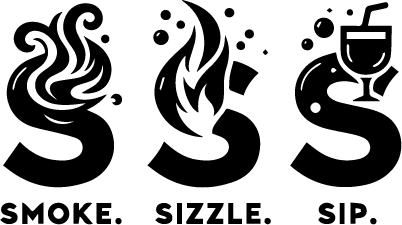Welcome to another insightful exploration at Smoke, Sizzle, Sip, where we delve into the intricate world of smoking, grilling, and refined beverages. Today, we ignite a heated discussion that stirs the curiosity of many smoking aficionados: Is it beneficial to soak wood chips before using them in a smoker? The tradition of soaking is deeply rooted in many smoking practices, with proponents claiming it enhances smoke quality and prolongs the smoking process. Yet, emerging scientific insights and extensive experimentation suggest that soaking may be an unnecessary step, or even counterproductive. Join us as we unravel the science and practical implications behind this debate, helping you decide whether to soak or smoke directly.

Understanding Wood and Smoke
To debunk or validate the soaking myth, a solid understanding of wood’s composition and the mechanics of smoke production is essential. Wood primarily consists of cellulose, hemicellulose, and lignin, complex polymers that form the structural components of plant cells. Upon heating, these materials decompose and release a variety of volatile organic compounds (VOCs), which contribute to the distinctive flavor of smoke. This thermal degradation typically begins at temperatures around 570°F (299°C), significantly higher than water’s boiling point at 212°F (100°C).
The Dynamics of Wood Soaking
The rationale behind soaking wood chips is to prevent them from catching fire too rapidly, thereby extending the duration and consistency of smoke release. Here’s a detailed look at what happens when you use soaked wood chips:
- Evaporation Phase: Initially, the smoker expends energy to evaporate the water absorbed by the wood chips. This not only reduces the overall temperature within the smoker but also means that during this phase, the wood emits mostly steam rather than smoke. It’s important to note that the penetration of water into the wood is mostly superficial, affecting only the outer layers.
- Delayed Smoldering Phase: Once the moisture has evaporated, the wood’s surface temperature escalates, allowing the wood to reach the requisite smoldering temperature for smoke production. This phase mirrors the smoking process of dry wood but with a time delay, essentially postponing the desired smoke output.
Scientific Insight: Heat Transfer and Moisture Content
Extensive research, including practical tests, highlights that the primary impact of water in soaked wood is confined to the evaporation stage, which surprisingly contributes minimally to the actual flavor-enhancing smoke. A pivotal study in “Meat Science” analyzed how various wood treatments influenced smoke penetration and the resultant flavor profile in smoked meats. The findings were telling; there was negligible benefit to soaking wood chips prior to smoking, with some tests even showing diminished smoke yield and altered smoke composition compared to using dry wood.
The Case for Using Dry Wood Chips
Opting for dry wood chips in your smoking process offers several practical and efficiency advantages. Here’s why choosing dry over soaked might be your best smoking strategy:
- Immediate Smoke Production: Dry wood chips start producing smoke almost immediately once they reach the correct combustion temperature. This eliminates any waiting period for water to evaporate, allowing for an instant start to smoking.
- Stable Temperature Control: Without the presence of moisture, the temperature within the smoker remains more stable. This predictability makes it easier to manage the cooking process, ensuring that the food is smoked evenly and to desired specifications.
- Enhanced Flavor and Smoke Quality: Dry wood chips tend to burn cleaner and more consistently, providing a controlled smoke that is rich in flavor yet not overwhelming. This is particularly important when smoking delicate proteins such as poultry or fish, where too much smoke can overshadow the natural flavors.
- Efficiency and Convenience: With dry wood, you can more accurately gauge how much smoke will be produced and for how long. This allows for precise adjustments during the smoking process, as opposed to the unpredictable nature of soaked wood, where the initial delay can affect the timing and intensity of smoke release.
Experimenting at Home
For those who are skeptical or simply curious about the impact of soaking wood chips, conducting a home experiment can be quite enlightening. Here’s how you can set up a simple comparative test:
- Setup Two Smokers: Prepare two smokers, one using soaked wood chips and the other using dry. Ensure other variables such as the type of wood, the smoker model, and external conditions like temperature and wind are consistent to make the experiment fair.
- Smoke Identical Dishes: Choose a common smoking recipe, perhaps a batch of ribs or chicken breasts, and smoke them simultaneously in both smokers. This parallel cooking will highlight any differences caused by the wood’s moisture content.
- Monitor and Document: Keep a detailed record of the time to smoke onset, temperature stability, and any fluctuations in both smokers. After the smoking process, compare the texture, flavor, and overall smokiness of the dishes.
- Evaluate the Results: Analyze the differences. Did the soaked chips provide any noticeable advantage? Or did the dry chips lead to a superior outcome? This practical test can help dispel myths and confirm the most effective method for your smoking style.
Expanding on the Conclusion: Embrace the Dry Smoke
While traditions in cooking and specifically in smoking are deeply cherished, the empirical evidence strongly supports the use of dry wood chips for a more effective and efficient smoking experience. By foregoing the soaking process, you not only save time but potentially enhance the flavor and quality of your smoked goods.
Remember, the beauty of culinary arts, especially smoking, lies in the continuous exploration and refinement of techniques. Each smoking session is an opportunity to experiment with different woods, temperatures, and times to discover what works best for your specific taste and equipment. Embrace the science behind the smoke, and let your culinary creativity lead the way to delicious discoveries.
Final Thoughts
This expansion and refinement aim to create a more in-depth, informative article that not only engages readers but also educates them on the scientific principles behind smoking techniques. By combining empirical research with practical advice, the article should now stand as a comprehensive guide that encourages readers to explore and optimize their smoking practices.
